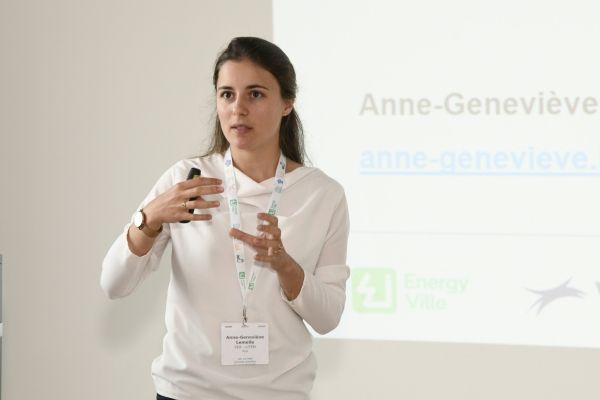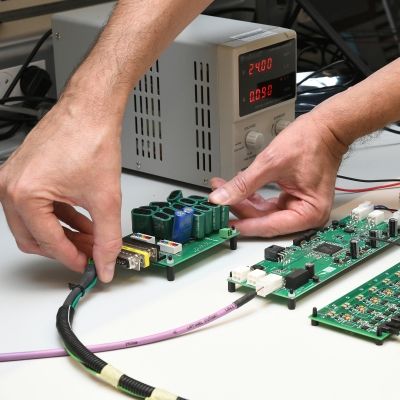With a flexible charging plan the smart charging point really does become intelligent
For some companies, their power supply capacity has traditionally been designed too small for optimal char-ging infrastructure; expansion is often financially or technically difficult. In both cases, smart charging can offer a solution. The current smart control of charging points is limited to load balancing. There is a lot of room for improvement in that regard, as experts from VITO/EnergyVille discovered. They developed software that makes managing charging points really intelligent, by taking into account both the convenience needs of employees and visitors and the financial aspects for the company.

Car fleets are currently in the process of being electrified, and so more charging infrastructure is urgently needed to power all these electric cars. Companies play an important role in this regard, especially now that the federal government has decided that all company cars must be electric from 2026 and also all new passenger cars from 2029.
However, most companies are not equipped to charge a lot of cars at the same time. ‘Companies’ connections to the electricity grid have historically been designed too small,’ explains Thomas Polfliet from VITO/EnergyVille. ‘They were calculated on the power consumption of the past, when there were no electric cars on the roads.’ As a result, charging cars now often has a major impact on the capacity of a company’s network. ‘Today, the capacity is still distributed as standard over all connected electric cars parked in the company car park. But this means that a car that has to leave after just an hour of charging has only received the same amount of power as a car that has been there the same amount of time but still has the possibility to continue charging all day. That’s not really conducive to the mobility and flexibility of company employees and visitors. It could lead to charging point stress.’
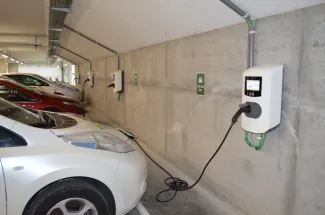
Drive more, pay less
The current company charging points usually only do load balancing (distributing available power or capacity across simultaneous charging sessions, as above). This means that they primarily protect the company network and installations - so that the fuses don’t blow. These charging points are often called ‘smart’, but that does injustice to what is actually feasible. Not only for the convenience of a company’s employees and visitors, but also for the company’s finances.
Drive more, pay less. Under this slogan, VITO/EnergyVille has recently marketed a new software package for the control of charging sessions at business parks with extensive loading infrastructure, renewable energy production and electrical storage. Its experts developed an algorithm that creates an intelligent charging plan which is tailored to an organisation - in the broadest sense: from an SME with charging infrastructure to a public car park. The planning algorithm takes into account the charging needs of employees and visitors: what time do they arrive, when do they leave again, how many kilowatt hours do they need to get to their destination? Companies can also configure whether certain categories of users are given priority, for example sales staff, visitors or people with a nearly empty battery.
But the algorithm does a whole lot more. ‘Bearing in mind the slogan above, we want to get as many driving kilometres as possible from the capacity of the company network,’ says Jef Verbeeck from VITO/EnergyVille. ‘At the lowest possible cost. We do this by planning the charging sessions when there is surplus power generated in-house (e.g. from the solar panels on the roof or the wind turbine at the company site). But also when power prices, which vary continuously throughout the day, are low.’ A third cost factor to set up the planning is the price incentive of peak power, which is already incorporated into the distribution grid tariff for companies. ‘These three cost factors make up the cost component. Based on this cost component and the convenience component, the charging plan is then optimised to the lowest possible cost.’
The charging plan is also extremely dynamic. ‘Every 15 minutes, the algorithm recalculates everything and the plan is then updated,’ explains Luc Rynders of VITO/EnergyVille. ‘That way, we can react quickly: in terms of weather forecasts (crucial for generating our own green electricity), electricity markets but also the moments employees and visitors arrive and leave, which of course can constantly change. The charging plan can therefore be adapted at any time, and our algorithm is designed for that.’
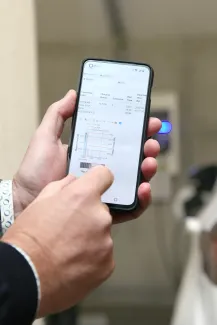
Testing island
The VITO planning algorithm is being tested at different locations, also at the EnergyVille site in Genk, the research campus where VITO with KU Leuven, UHasselt and imec join their energy transition related research. The car park is equipped with 36 charging points and a smartphone application for the employees. This local hardware is managed jointly with KU Leuven. Thanks to the VITO smart planning the charging points are mostly fed with own produced solar power. Luc Rynders: ‘When we monitor these charging sessions, we find that the re-evaluation of the charging plan every 15 minutes at the end of the day does not lead to any problems, for example with insufficiently charged cars.’ VITO/EnergyVille also has a ‘testing island’, a small isolated and closed-off part of the company network. This is where the algorithm is further studied, improved and extended with new features: for example, the margins of error in the charging plan are looked at, and how far the limit for the total charging capacity can be reduced without impacting convenience and operational reliability.
The VITO planning algorithm is also being used by Phoenix Contact (see box), supplier of electronics and automatisation systems for sites and buildings. Also others like energy suppliers, charging station operators, battery distributors and suppliers of building management systems show strong interest. They are looking at offering the planning software to their end customers (companies), usually in combination with their own products and services. VITO/EnergyVille is also currently working on an interface that will record the preferences of business park operators, such as priority users or a cap on peak consumption for charging sessions.
The smart charging plan is also contributing to the broader energy transition. ‘Now that commercial vehicle fleets are rapidly being electrified, we will soon have huge potential to start buffering the national electricity grid, as it is increasingly supplied with power from variable, so-called intermittent sources,’ explains Jef Verbeeck. ‘If companies soon have surplus capacity, thanks in part to our solutions, they can therefore start offering it to grid operators or energy suppliers.’
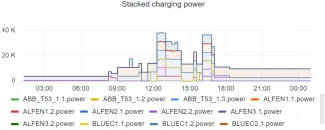
Energy management system offers companies breathing space
Phoenix Contact is a global leader and innovator in the field of electrification. ‘We are seeing that electrification is a disturbing factor for companies’, explains Frederik Leempoels, business developer e-mobility at Phoenix Contact. ‘Their insufficient connections to the power grid are often an obstacle to the development of a full-fledged charging infrastructure.’
Phoenix Contact is already providing solutions to companies with their energy management system. ‘This ensures that their power supplies are stable, but it also creates breathing space
for investments, for example in electrifying their vehicle fleet,’ adds Leempoels. The system uses VITO/EnergyVille’s smart charging technology for buildings.





